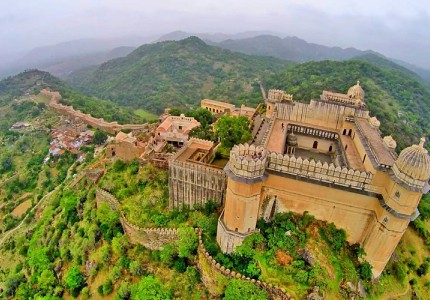Kumbhalgarh
Our Packages
Explore Our Kumbhalgarh Tours
Kumbhalgarh, situated in the Rajsamand district of Rajasthan, India, stands as a prominent Mewar fortress on the Aravalli Hills' western range. Recognized as a World Heritage site under the Hill Forts of Rajasthan, this fort was constructed in the 15th century by Rana Kumbha and is renowned as the birthplace of Maharana Pratap, the celebrated Mewar king and warrior. Its extensive defensive walls stretch over 36 kilometers, making it the second longest continuous wall globally, after the Great Wall of China.
The fort features seven fortified gates, along with numerous palaces, temples, and gardens. Within its walls are more than 360 temples, including the highly revered Shiva Temple. Visitors are captivated by the fort's strategic placement and grand architecture, which is further highlighted by an evening light and sound show detailing its historical significance. Kumbhalgarh also offers stunning panoramic views of the surrounding landscape, making it a perfect spot for history enthusiasts, nature admirers, and photographers seeking to experience Rajasthan's rich heritage.
Gallery


Kumbhalgarh Fort
Located 84 kilometers north of Udaipur, Kumbhalgarh is the second most significant fortress in the Mewar region after Chittorgarh. Nestled in the rugged Aravali Ranges, the fort was constructed in the 15th century AD by Rana Kumbha. The challenging terrain adds to the fort's formidable nature, making it appear nearly invincible.
Kumbhalgarh served as a sanctuary for Mewar's rulers during times of conflict and was a refuge for King Udai of Mewar during his childhood when Banbir seized the throne after killing Vikramaditya. The fort holds deep sentimental value, as it is the birthplace of Mewar's revered ruler, Maharana Pratap. Completely self-sufficient, Kumbhalgarh was designed to withstand prolonged sieges, with its defenses breached only once due to a lack of drinking water during a combined attack by Mughal and Amber forces.